Trapped Chest
A trapped chest emits a signal when players open it, making it ideal for crafting traps.
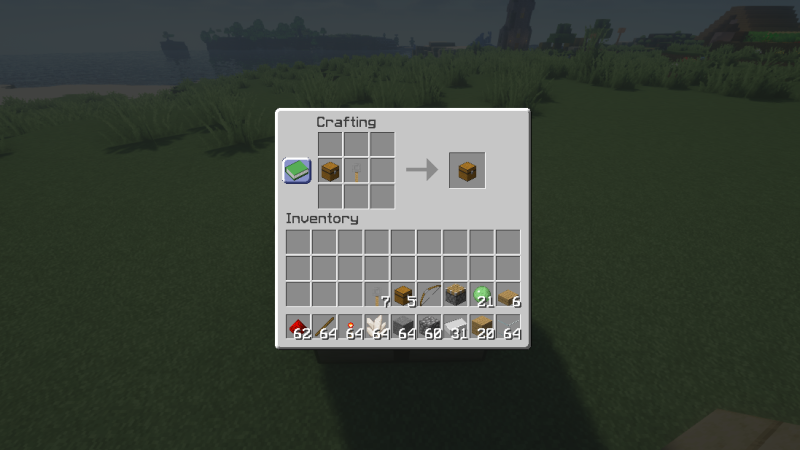
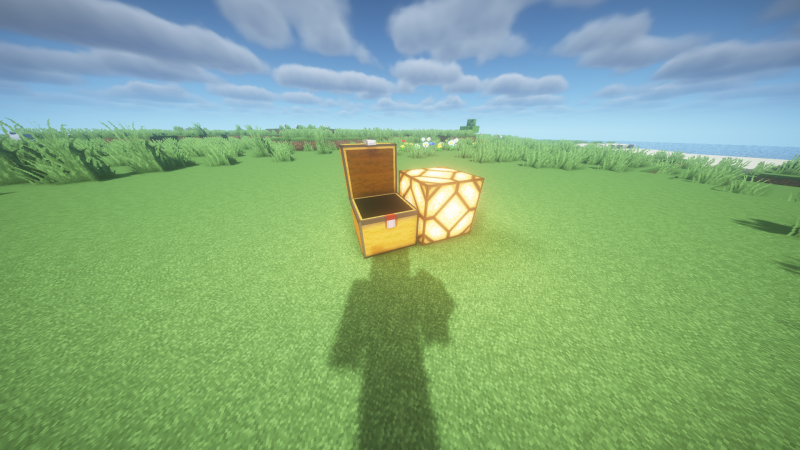
Sculk Sensors
Sculk sensors were introduced with the Ancient City underground biome update. These sensors pick up vibrations triggered by actions like walking, jumping, block breaking, and chest opening. Once a vibration is detected, the Sculk sensors generate a Redstone signal.
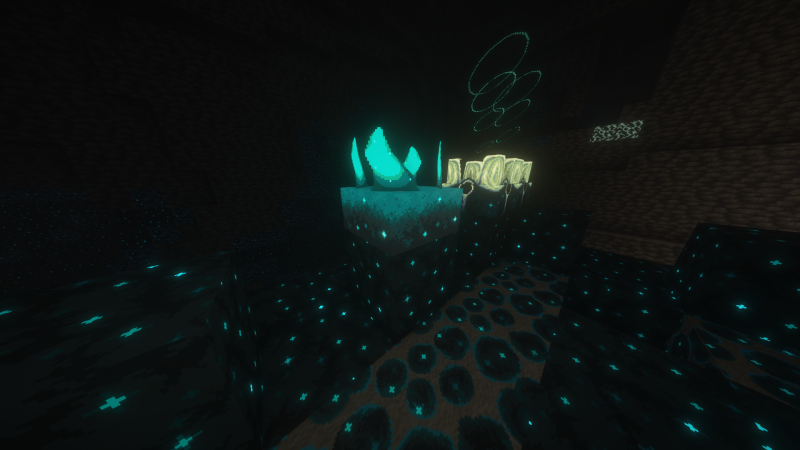
These sensors have enabled players to devise the earliest form of “wireless” Redstone contraptions. To avoid detection, you can crouch or use wool to cover them. Wool acts as a sound dampener.
Sculk sensors have a detection range of 8 blocks for sounds, but you can upgrade them into calibrated sculk sensors by using amethyst crystals. This upgrade extends their range to a radius of 16 blocks.
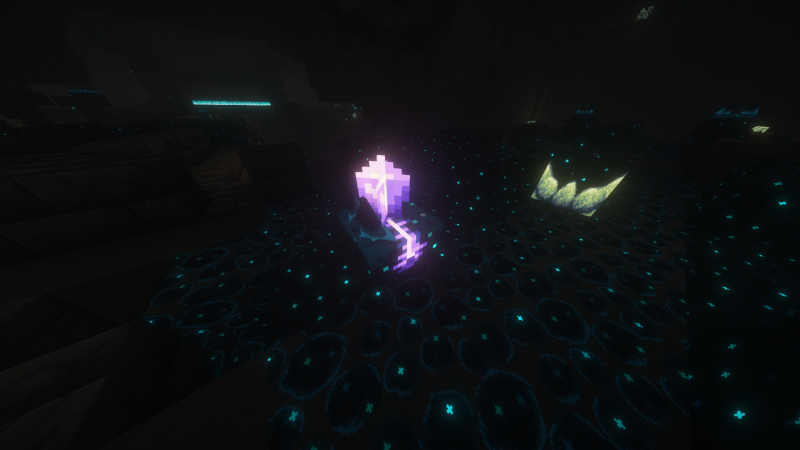
Target Block
The target block releases a Redstone signal when struck by projectiles like arrows, eggs, tridents, crossbows, and splash potions. The strength of the signal varies based on the projectile’s distance to the block’s center.


The target block also triggers the observer as it is seen as an updated block whenever it is hit.
Redstone Lamp
As the name suggests, a Redstone lamp illuminates when it receives a Redstone signal. Crafting a Redstone lamp involves placing a single glowstone in the center of the crafting grid and surrounding it with four Redstone dust.
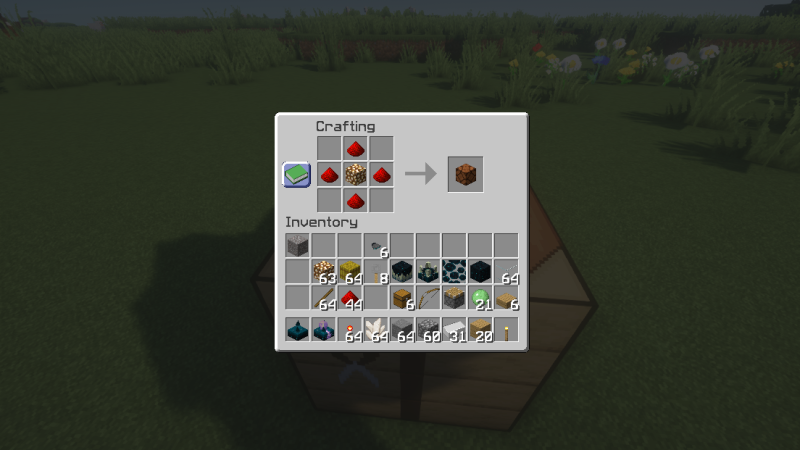

Note Block
A note block produces sound either when it’s struck by a player or when powered by a Redstone signal. The sound of the note block can be changed by placing different types of blocks above or below it.
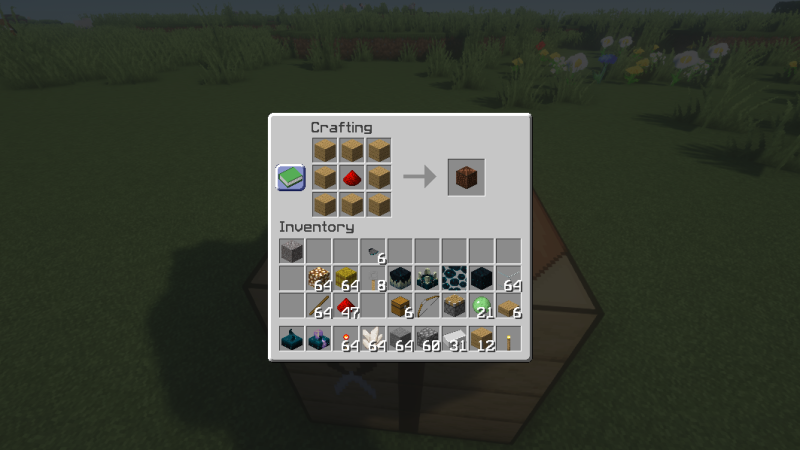
Note blocks can also play a role in farming with Allays. If an Allay is within a 16-block range of a playing note block, it will be drawn to the sound and will gather nearby items, dropping them nearby.
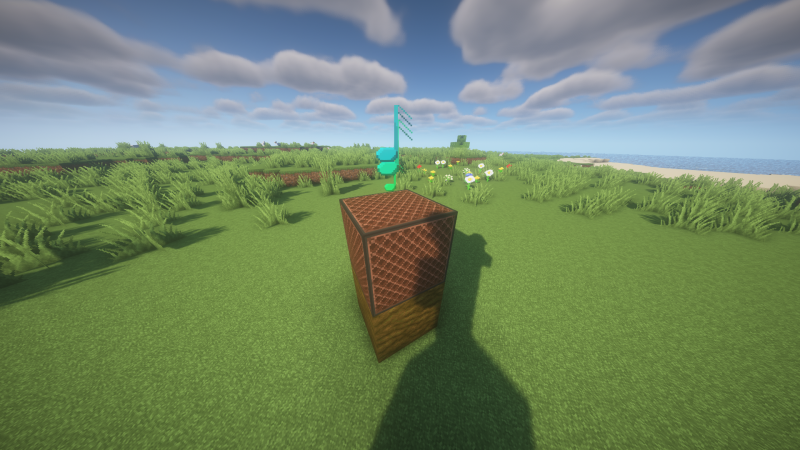
Much like the vibrations sensed by Sculk sensors, the interaction between note blocks and Alloys involves sound vibrations. If wool blocks are placed between an Allay and a note block, the Allay won’t be able to hear the notes.
Powered Rails
Powered rails are rails that get energized by Redstone, giving a speed boost to Minecarts. To power these rails, position a Redstone source like a Redstone block or torch next to the block containing the powered rail or beneath it. This sends a signal that activates the rail and propels Minecarts forward.
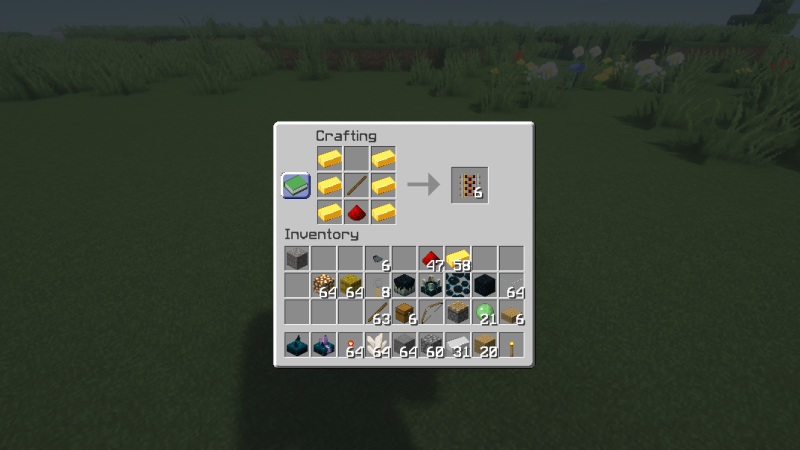
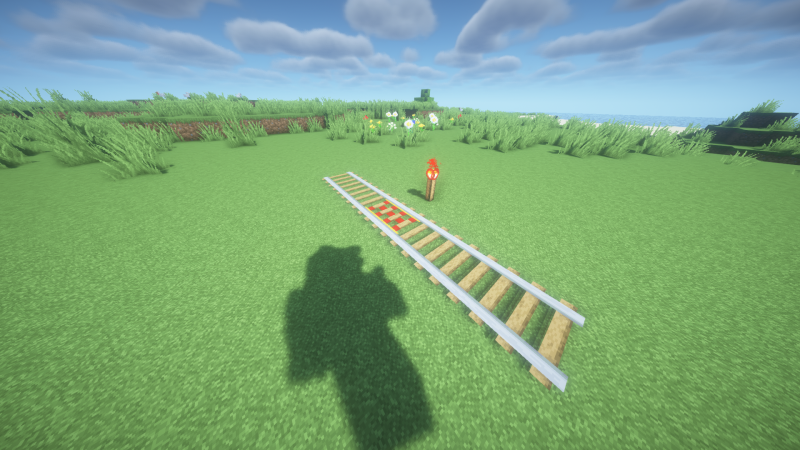
Activator Rails
Activator rails trigger specific types of Minecarts as they move over them. Various Minecart types, like TNT Minecarts or hopper Minecarts, can be affected.
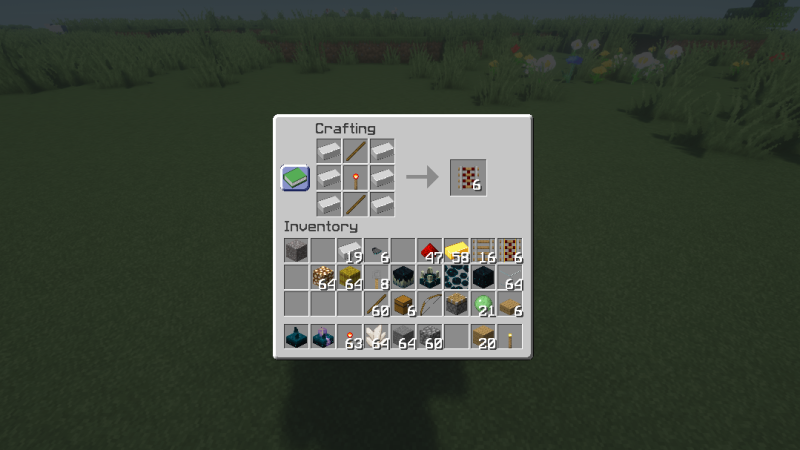
For instance, when a TNT Minecart crosses an activator rail, it detonates the TNT it carries.
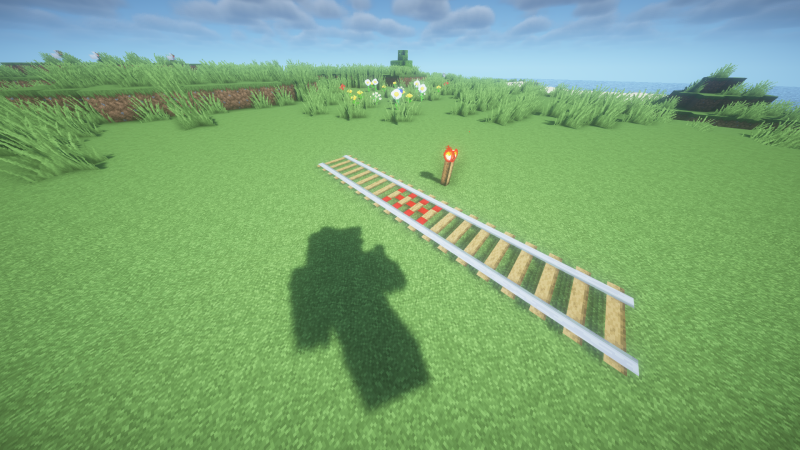
Redstone Logic Gates
Logic gates in Minecraft function exactly the same way as they do in the real world. These gates employ the same fundamental principles and can be built using Redstone and its components within the game. Logic gates are basic mechanisms that compute the output based on the input they receive. As these logic gates generate an output based on the status of their input, each logic gate section is accompanied by a truth table that shows the output with respect to the inputs.
We will go through all the useful logic gates and how to build them in Minecraft. There are six main logic gates you can create and they are as follows:
NOT
The NOT gate is the most simple logic gate in Minecraft. Its main function is to act as an inverter. It takes an input and gives the opposite as the output. For instance, if you switch the lever ON, it makes the connected mechanism turn OFF.
| INPUT | OUTPUT |
|---|---|
| ON | OFF |
| OFF | ON |
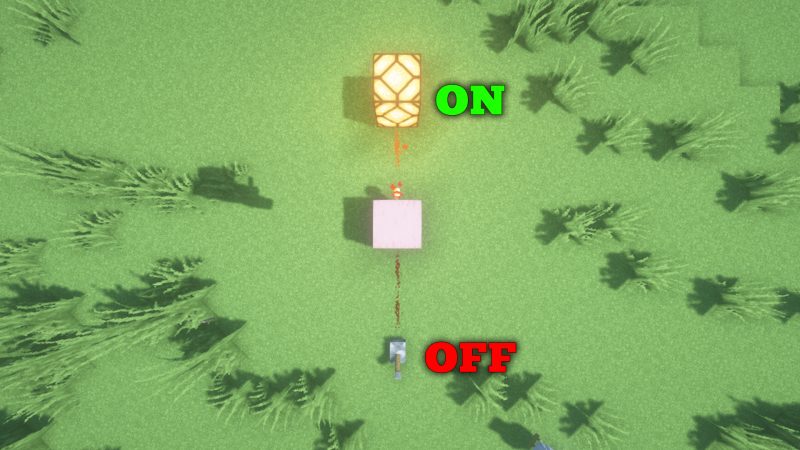

OR
The OR gate in Minecraft works with two inputs to produce one output. But either both inputs must be ON or just one of them needs to be ON for the output to be ON. If both inputs are OFF, the output stays OFF too.
| INPUT | INPUT | OUTPUT |
|---|---|---|
| ON | ON | ON |
| ON | OFF | ON |
| OFF | ON | ON |
| OFF | OFF | OFF |
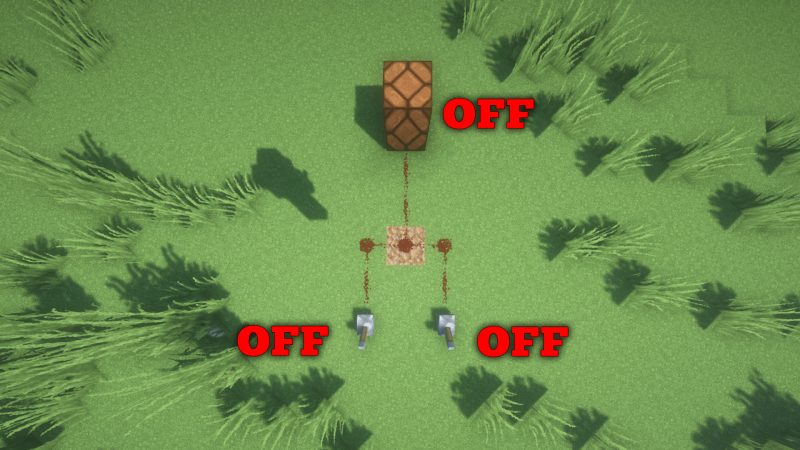
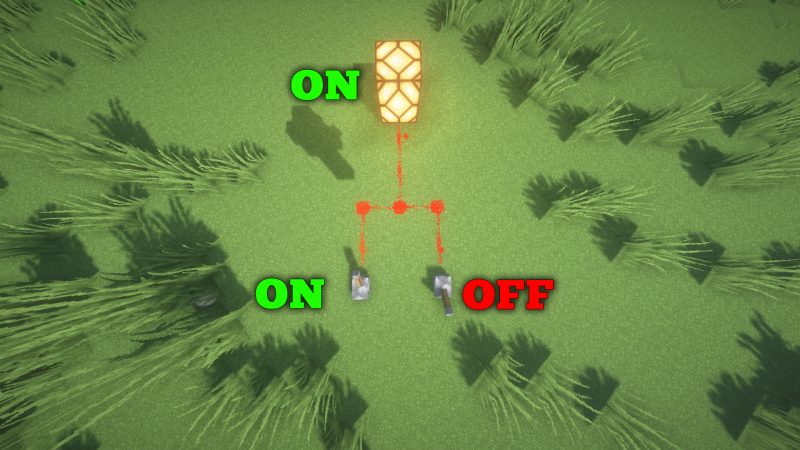

NOR
A NOR gate is an inverted version of the OR gate. It also takes two inputs to produce one output. However, it will only produce an ON output if both inputs are OFF. It will not give an ON output even if one of the inputs is set to ON status. You’re pretty much combining NOT and OR gate to create a NOR gate.
| INPUT | INPUT | OUTPUT |
|---|---|---|
| ON | ON | OFF |
| ON | OFF | OFF |
| OFF | ON | OFF |
| OFF | OFF | ON |
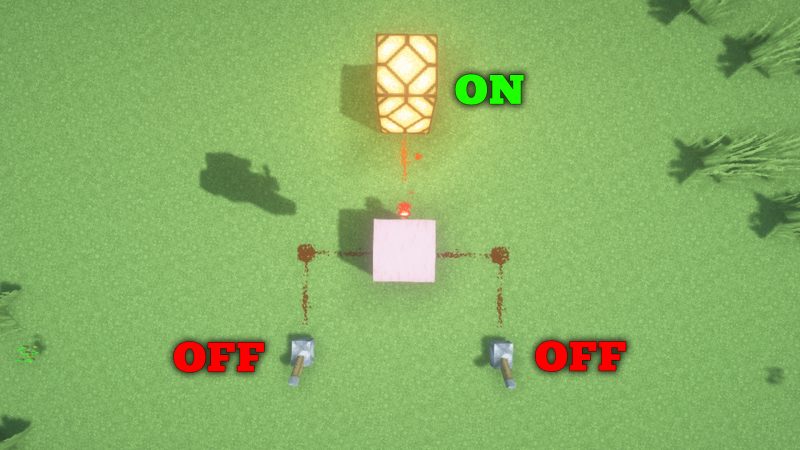
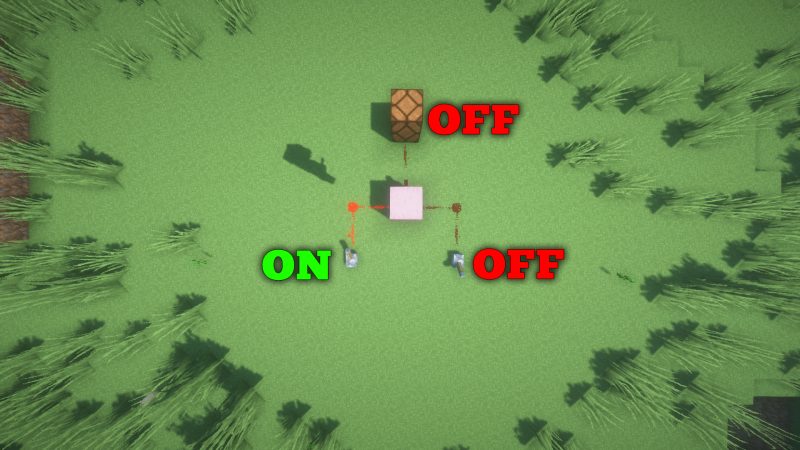
AND
The AND gate in Minecraft shares some similarities with the OR gate, but it operates with a slight difference. While an OR gate requires either one of the inputs to be turned ON for an ON output, the AND gate works differently. It only produces an ON output when both inputs are set to ON. If one or both inputs are OFF, it will result in an OFF output.
| INPUT | INPUT | OUTPUT |
|---|---|---|
| ON | ON | ON |
| ON | OFF | OFF |
| OFF | ON | OFF |
| OFF | OFF | OFF |
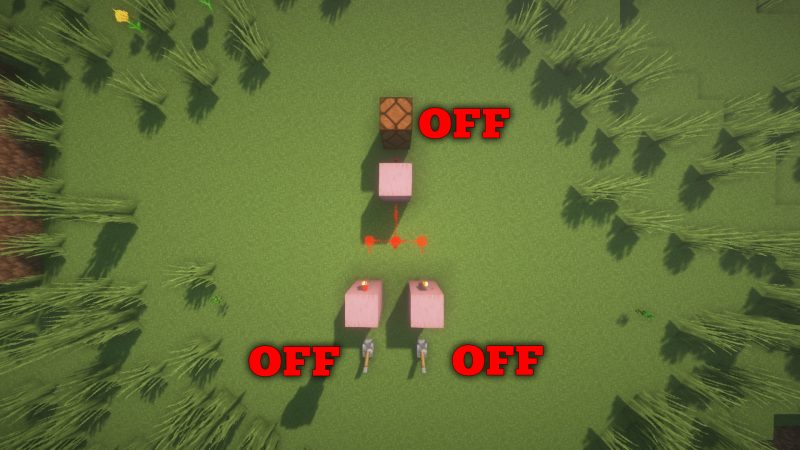
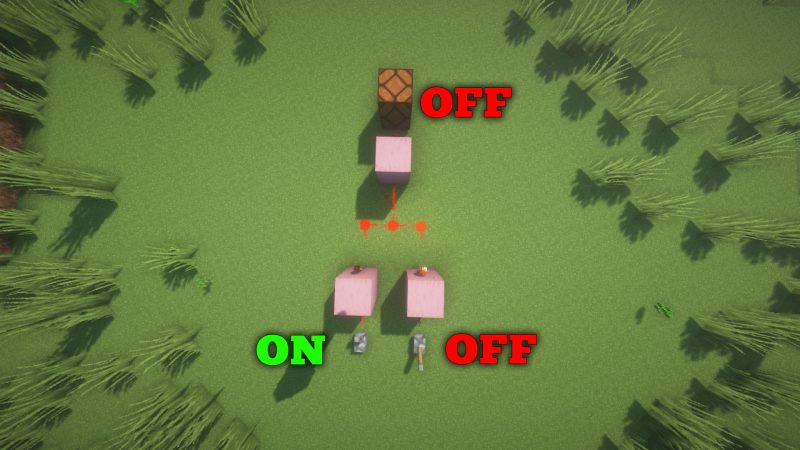
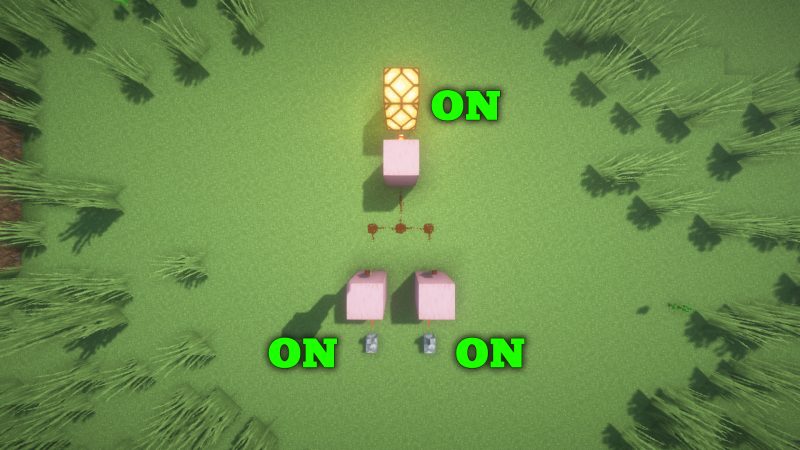
NAND
Just as its name implies, the NAND gate serves as the inverted version of the AND gate. In the NAND gate, both inputs must be switched ON for the output to become OFF. If one or both inputs are in the OFF state, it will produce an ON output.
| INPUT | INPUT | OUTPUT |
|---|---|---|
| ON | ON | OFF |
| ON | OFF | ON |
| OFF | ON | ON |
| OFF | OFF | ON |
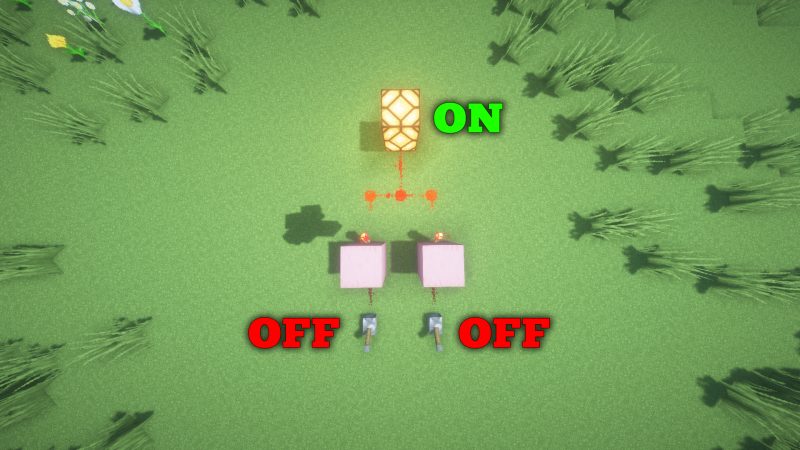
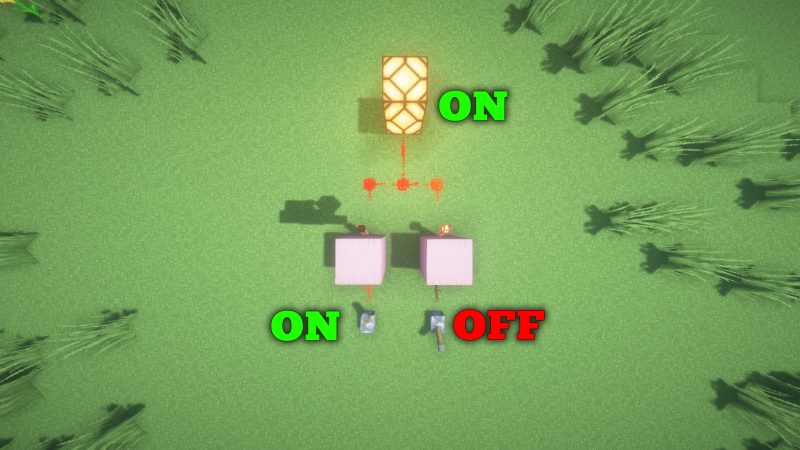

XOR
Okay, the XOR gate shares similarities with the standard OR gate, but it distinguishes itself by providing an ON output only when one of its inputs is set to ON. If both inputs are either OFF or ON, it generates an OFF output. However, if only one of the inputs is set to ON, then the output becomes ON. You will understand it better by referring to the table below.
| INPUT | INPUT | OUTPUT |
|---|---|---|
| ON | ON | OFF |
| ON | OFF | ON |
| OFF | ON | ON |
| OFF | OFF | OFF |
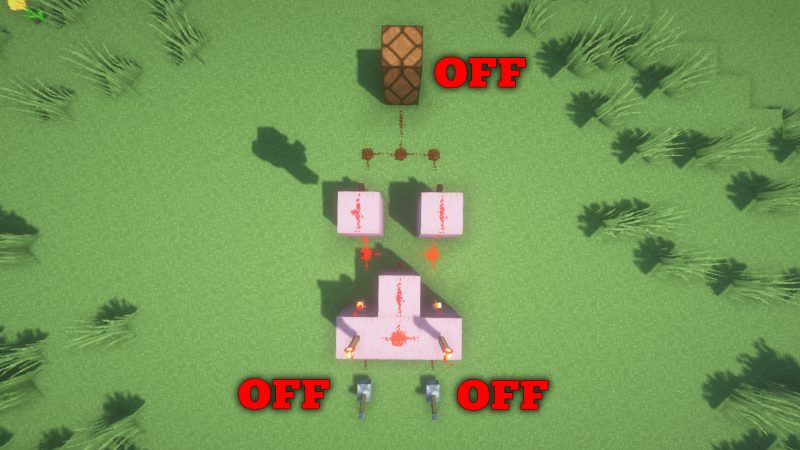
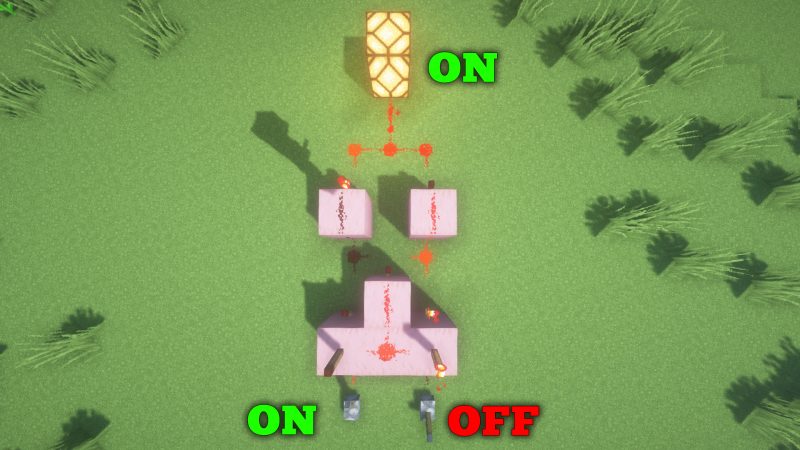

In this logic gate, we have a hard criteria for the output to be turned ON, that is, to only turn ON one of the inputs and not both. This logic gate needs different power statuses. If both input switches are in the same position, the output will always be OFF.
XNOR
The XNOR gate is basically the XOR gate connected to a NOT gate to invert its function. In an XNOR gate, both inputs must be in the same state, either both ON or both OFF, for the output to be ON. If only one of the inputs is ON while the other is OFF, the output will be OFF.
| INPUT | INPUT | OUTPUT |
|---|---|---|
| ON | ON | ON |
| ON | OFF | OFF |
| OFF | ON | OFF |
| OFF | OFF | ON |
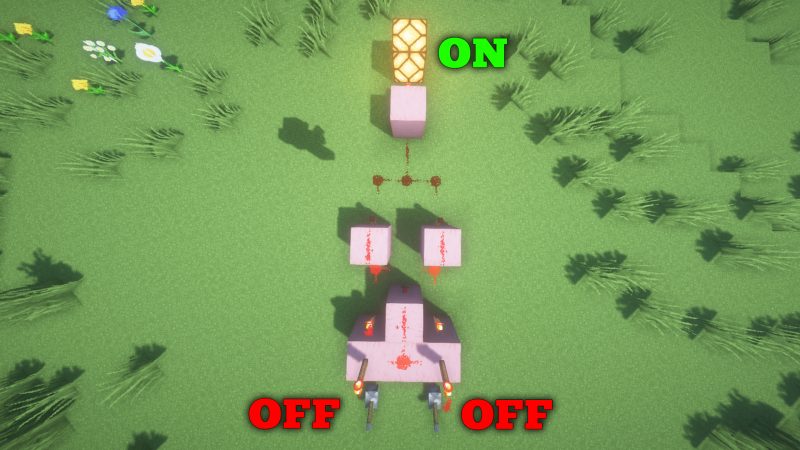
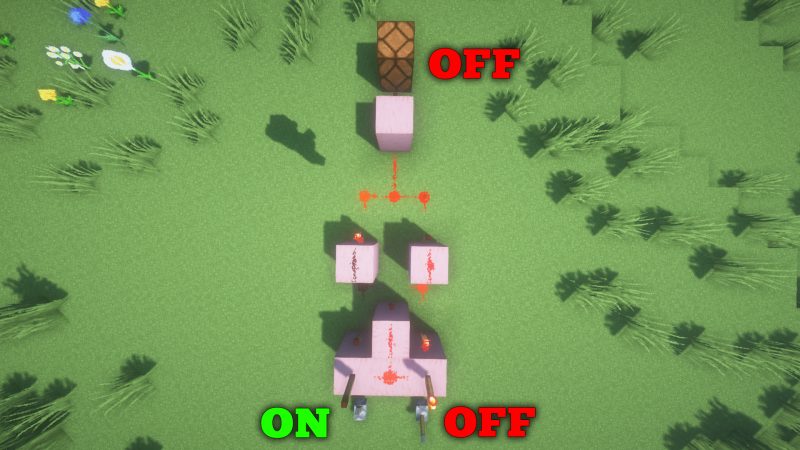

That wraps up our Minecraft Redstone guide. These basics provide a solid foundation for understanding Redstone mechanics in Minecraft. With these concepts in mind, you can combine and explore creative ideas to build innovative mechanisms in the game.
